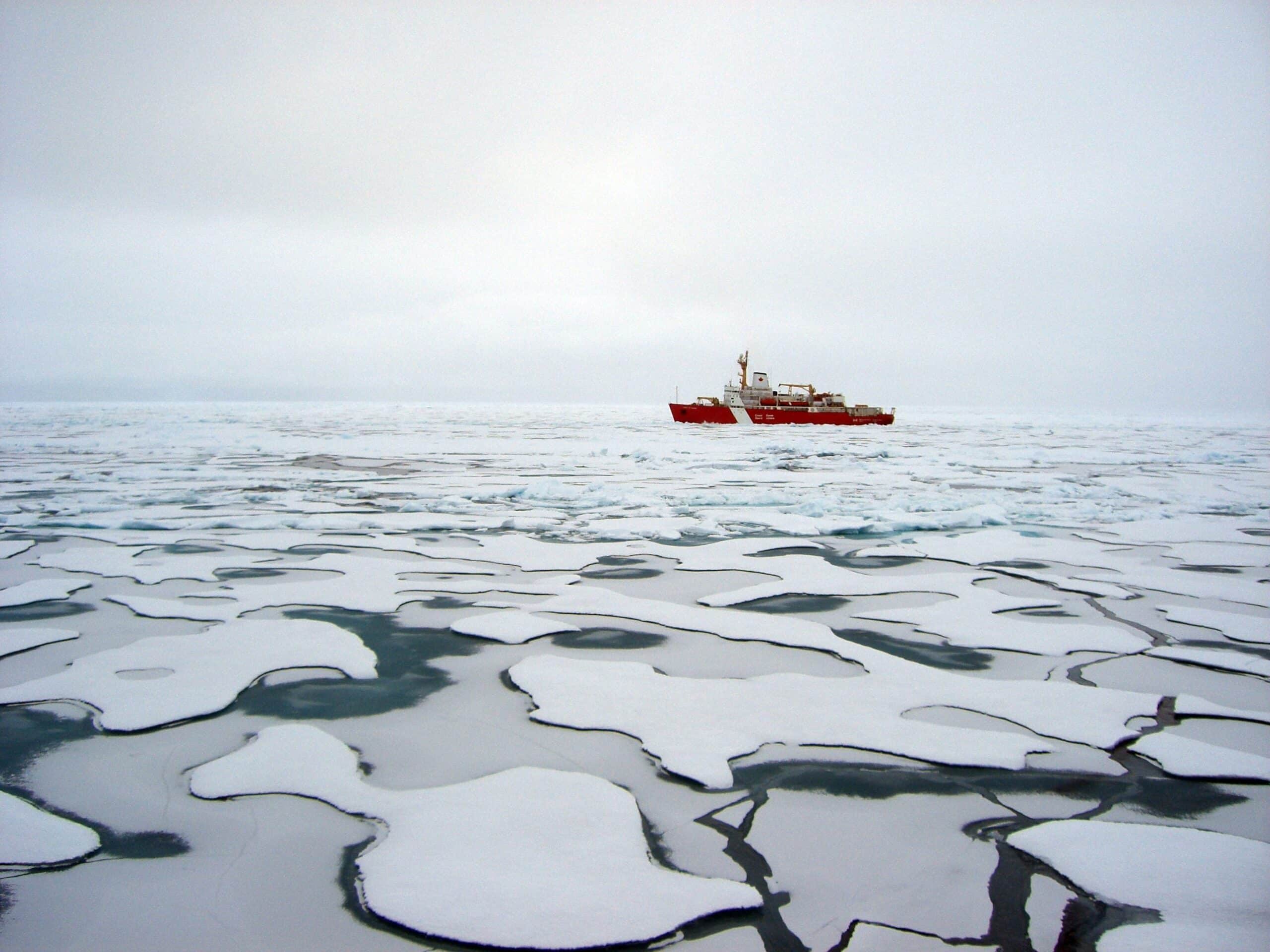
View of the fourth joint United States-Canada mission to map the continental shelf of the Arctic Ocean in August and September 2011. Photo: US Department of State
The battle for supremacy in the Arctic is intensifying as melting ice and growing tensions reinforce the need to secure undersea cables – our digital lifelines – amid growing infrastructure disruption. Submarine cables are an integral part of our digital infrastructure; almost 99% of everything you do online is transmitted through them. From the cat videos you watch late at night to your health records and banking login information, you rely on undersea cables every day. You are not alone; governments and militaries also rely on these same channels to transmit sensitive information and transoceanic communications. Leveraging quantum technology will be key to ensuring the security, reliability and resilience of submarine cables.
Just as nations once raced to harness atomic energy to make nuclear weapons, today’s challenge is to unlock the potential of quantum technology. This article explores the urgent need to develop and deploy new quantum sensors to protect underwater infrastructure in the European Arctic against the threat of hybrid attacks by Russia and China. Securing telecommunications is not simply about maintaining a competitive advantage in the Arctic; it is a necessity to guard against attempts to undermine regional stability and security. By spearheading the development and adoption of innovative quantum sensors, Western Arctic states can improve their underwater situational awareness, strengthen deterrence, and establish frameworks for use of quantum technology.
The European Arctic is no longer the quiet theater of “Far North, low voltage.Russian and Chinese commercial and research vessels began carrying out debunked disruption operations in the region, targeting the cables by dragging an anchor across the seabed. Notable incidents include cable breaks between Svalbard and Norway in 2021 and between Finland and Estonia in 2023. Although the intentions of China and Russia remain unclear, their hybrid operations clearly pose a threat to regional security. With demand for expansion connectivity across the ArcticPhysical and cyber intrusions are increasingly alarming to national security, especially if an intruder intercepts, modifies or disrupts the flow of critical and time-sensitive information.
The rise of Russian and Chinese hybrid operations targeting Arctic lines of communication is exacerbating regional tensions. The absence of demarcated red lines for undersea infrastructure could weaken the credibility of NATO’s deterrence posture, undermine the alliance’s resolve to respond to attacks, and increase the risk of unintended escalation. However, the NATO Underwater Infrastructure Coordination Cell has the potential to foster alliance cohesion, align threat perceptions regarding undersea infrastructure, and reduce the risks of accidental miscalculations. Red lines by themselves are insufficient and could encourage adversaries to commit more antagonistic acts that fall below the established threshold. Protecting critical underwater infrastructure requires a more robust and proactive solution.
Countering hybrid threats in the European Arctic requires better underwater situational awareness, which the new generation of quantum sensors will provide. As global connectivity expands, new and existing cables face increasingly complex challenges. Unlike traditional detection technologies, quantum sensors use the principles of quantum physics, enabling rapid and precise monitoring of the environment. Through quantum entanglement and superpositions, sensors reduce the signal-to-noise ratio and increase the monitoring range. These capabilities are crucial amid fears that Russia will deploy sophisticated weapons. unmanned underwater vehicles to disrupt and exploit critical cables. Quantum sensors will not only serve as an advanced early warning mechanism but will also make such intrusions almost impossible.
Quantum sensors will also act as a powerful deterrent. With their advanced early detection and superior security capabilities, they will discourage potential intruders from attempting to disrupt the cables, as the risks associated with conducting such activities will be significantly higher. Greater situational awareness of the underwater theater will force antagonistic actors to think carefully about their actions, as their chances of going unnoticed or unaccountable will be diminished. Ultimately, the change in the security environment that will be brought about by quantum sensing capabilities will foster robust defense mechanisms and establish new standards of maritime conduct.
The transformative potential of quantum technology extends beyond underwater applications, improving communications security, intelligence collection, and critical infrastructure protection. Early adopters of quantum sensing will not only gain a competitive advantage, but will also define and shape the standards for its use. It is essential that NATO Arctic states and their allies collectively develop this new generation of technologies, thereby strengthening telecommunications security and establishing themselves as global leaders in its responsible deployment.
Quantum technology is an emerging field in which it will be essential to be a pioneer in its development for US-Chinese competition. To prevent competitors and adversaries from acquiring this expertise first for their hybrid operations, co-development of this advanced technology within the NATO architecture is essential to reduce costs and accelerate development. Just as the United States worked with its allies and partners to rapidly develop nuclear weapons, it is time to take the same approach with quantum technology.
We live in an era defined by digital warfare and rapid technological innovation. Tensions in the European Arctic are growing amid concerns about hybrid threats to our planet. communication systems. Investing in and implementing quantum technology will improve our resilience to future physical and cyber threats. We must harness the momentum of technological cooperation and mobilize innovators from the private sector and academia across the NATO alliance and its partners. The development and deployment of quantum technology will chart the path to peace, stability and security in the European Arctic and beyond.
Jana Ondrašková is a program assistant at Geostrategy North, the German Marshall Fund of the United States.


